How to Back Your Trailer Into Place
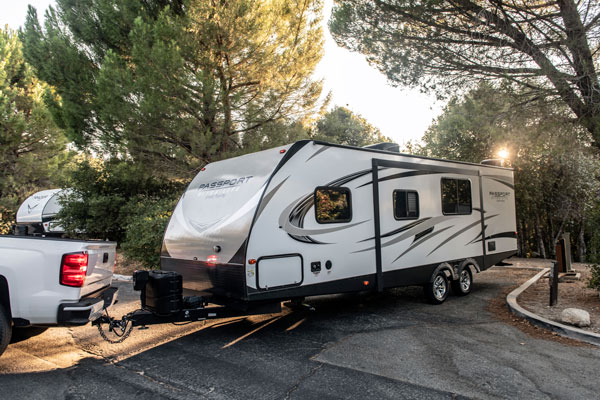
Backing in your new travel trailer can be a daunting task for those new to towing. Left is right, right is left. Add in the pressure of avoiding poles, trees, or other obstacles, and you have the formula for a highly stressful situation. To make things easy, we’ve outlined a few simple steps to help you be a pro the next time you have to back up your rig with the trailer hooked up.
Before you do anything, it helps to get out of the vehicle and inspect the area you plan to park the trailer. Make sure it’s clear of any low hanging branches, and there aren’t any objects in the way. If you have a slide-out, account for the extra room needed for the slide-out when extended. Be sure to note where the trailer hookups are and that the trailer is in the proper proximity to those connections. Lastly, take note of the surface — is it level? If not, make sure to account for leveling blocks under the tires if necessary. Gathering all this info before you’re in the truck backing up will make the whole process much smoother.
Pro Tip: A spotter and a good set of walkie-talkies will save a lot of frustration. Having an extra set of eyes is ALWAYS a good idea, especially when parking a new or unfamiliar rig.
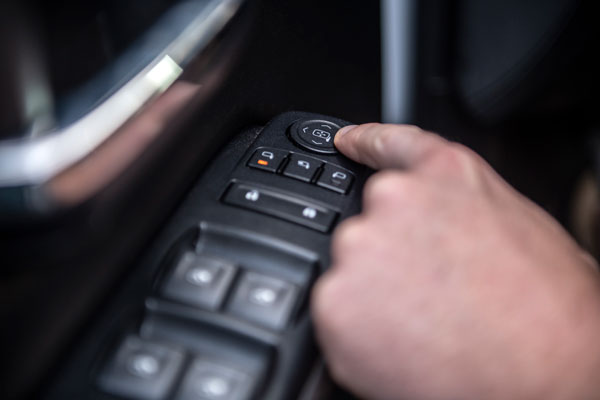
Before you put the vehicle in reverse, ensure your mirrors are correctly adjusted. If you can see both your trailer and the target location for the trailer (and the spotter if you have one), then the mirrors are where they need to be.
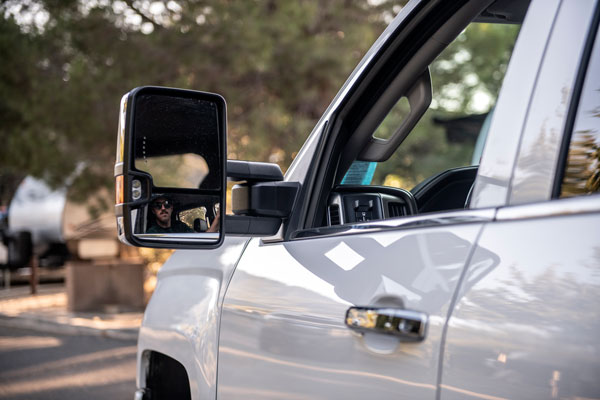
Now let’s get to the fun part – backing up is a very counter-intuitive task, and to be proficient, it takes practice. It’s imperative that you understand which direction your trailer will move based on the input from the steering wheel.
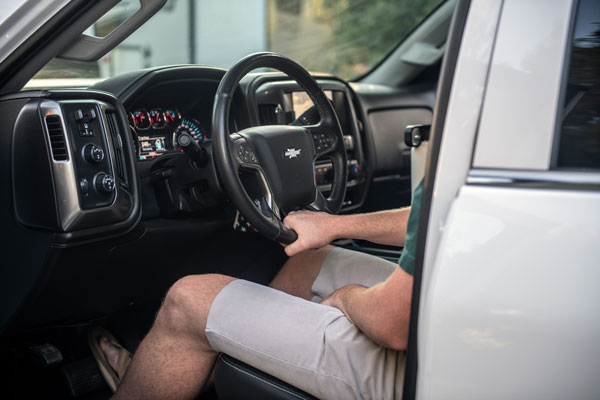
The position of your hands is critical. Place your hand at the bottom of the steering wheel, or the “6 o’clock position.” In this position, the vehicle will move in the direction you turn the wheel. If you turn to the right, the trailer will go right, and if you turn the wheel to the left, the trailer will move to the left.
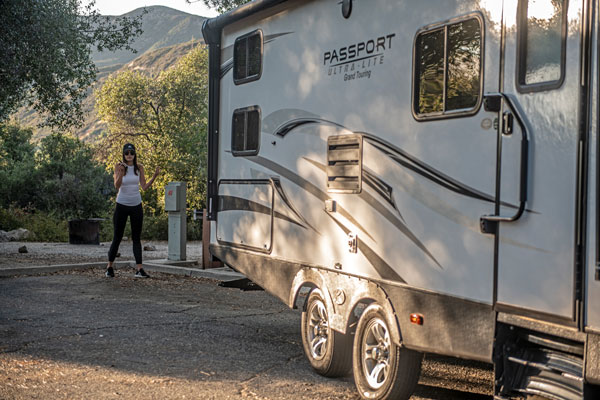
Having a spotter is always useful when backing in your trailer, and your spotter must understand what you plan to do. Walkie-talkies are a helpful tool to maintain communication with your spotter, in the event you may not have cell phone service at your campsite. Your spotter should act as a second set of eyes to tell you when to stop — and also to make sure that the slide-out has ample room.

As you pull up the campsite, drive past the site, then bring the nose of your truck closer to the site before turning away, so you can start backing in. This strategy brings the tires of the trailer closer to the end goal of where you want the trailer to be when you’re parked. From this position, you can back the trailer into the spot correctly. Often, you will not get it just right on the first try, so don’t get flustered. By pulling forward a few feet, you can correct yourself and give it another shot.
Pro Tip: The longer the trailer, the longer the response time. It’s much easier to back in a 30-foot-long trailer than it is a 10-foot-long trailer. Shorter trailers react more quickly to steering wheel input and will require much more practice to set into place easily.
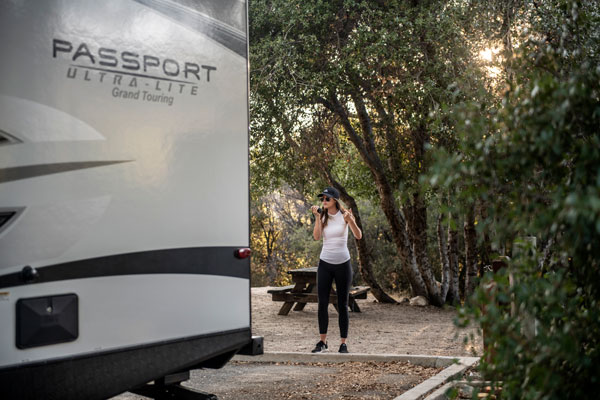
The spotter must be sure to stay in the driver’s line of sight, that the driver can hear them, and that the driver can see them in the rear-view mirrors. Once the trailer is almost positioned into place, the spotter should move to the back of the trailer for a closer look. This step ensures that the trailer won’t collide with anything on the way back — such as posts, trees, or other vehicles.
Pro Tip: Using directions like “Left” or “Right” can be misleading, as they are not always the same related to the driver’s position. Utilizing “Driver” and “Passenger” directional cues can make things much easier, as the “Driver” and “Passenger” sides of the vehicle will never change.
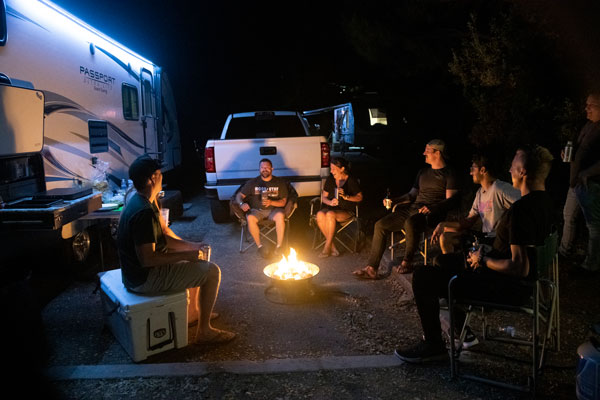
We hope this information will make your next camping trip much more enjoyable and take away some of the intimidation associated with backing up a trailer.
For more information, check out this video full of helpful tips from our CEO, Mark Hellwig
